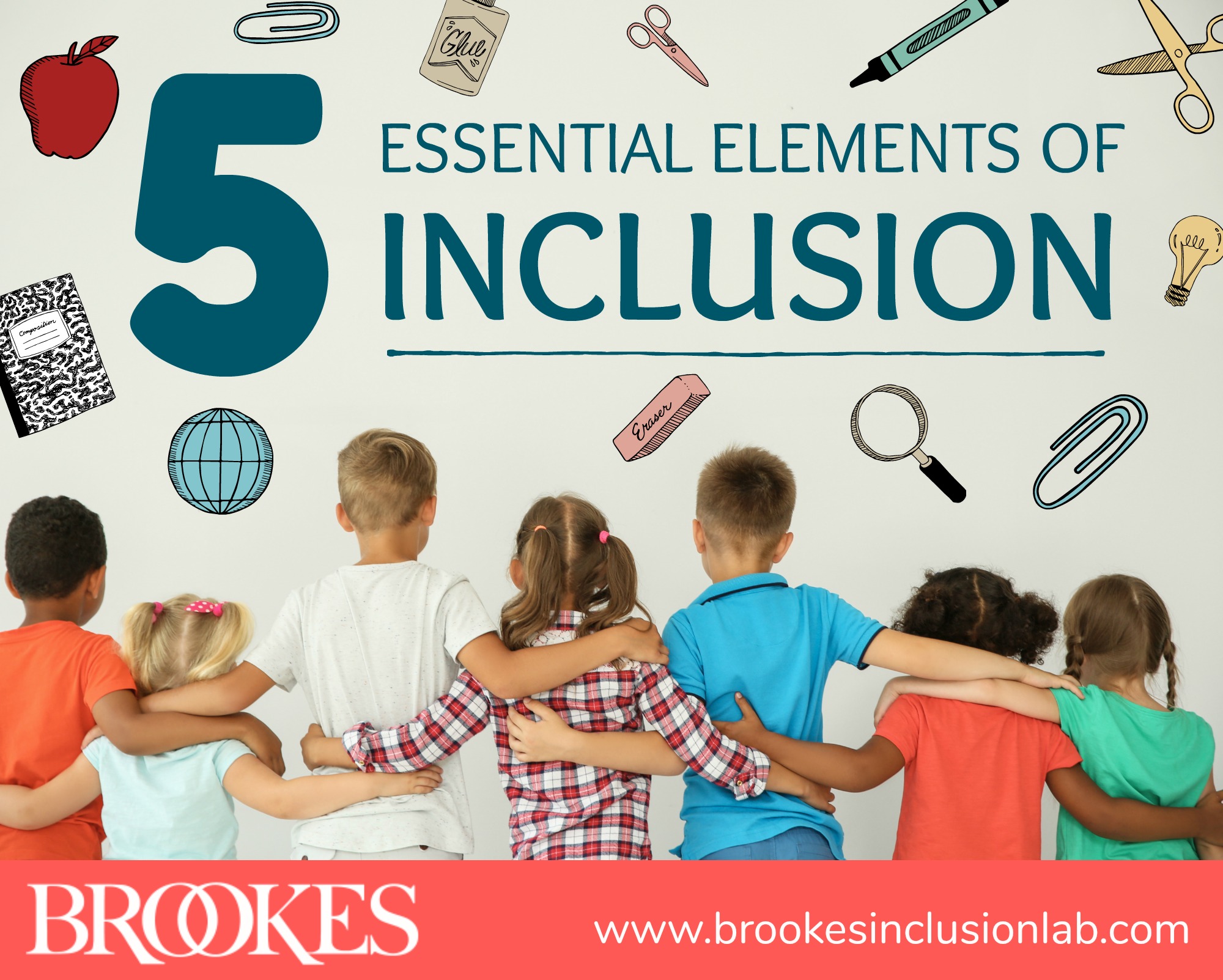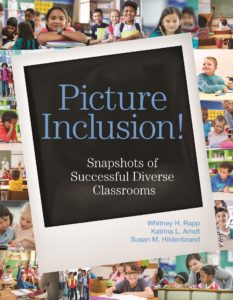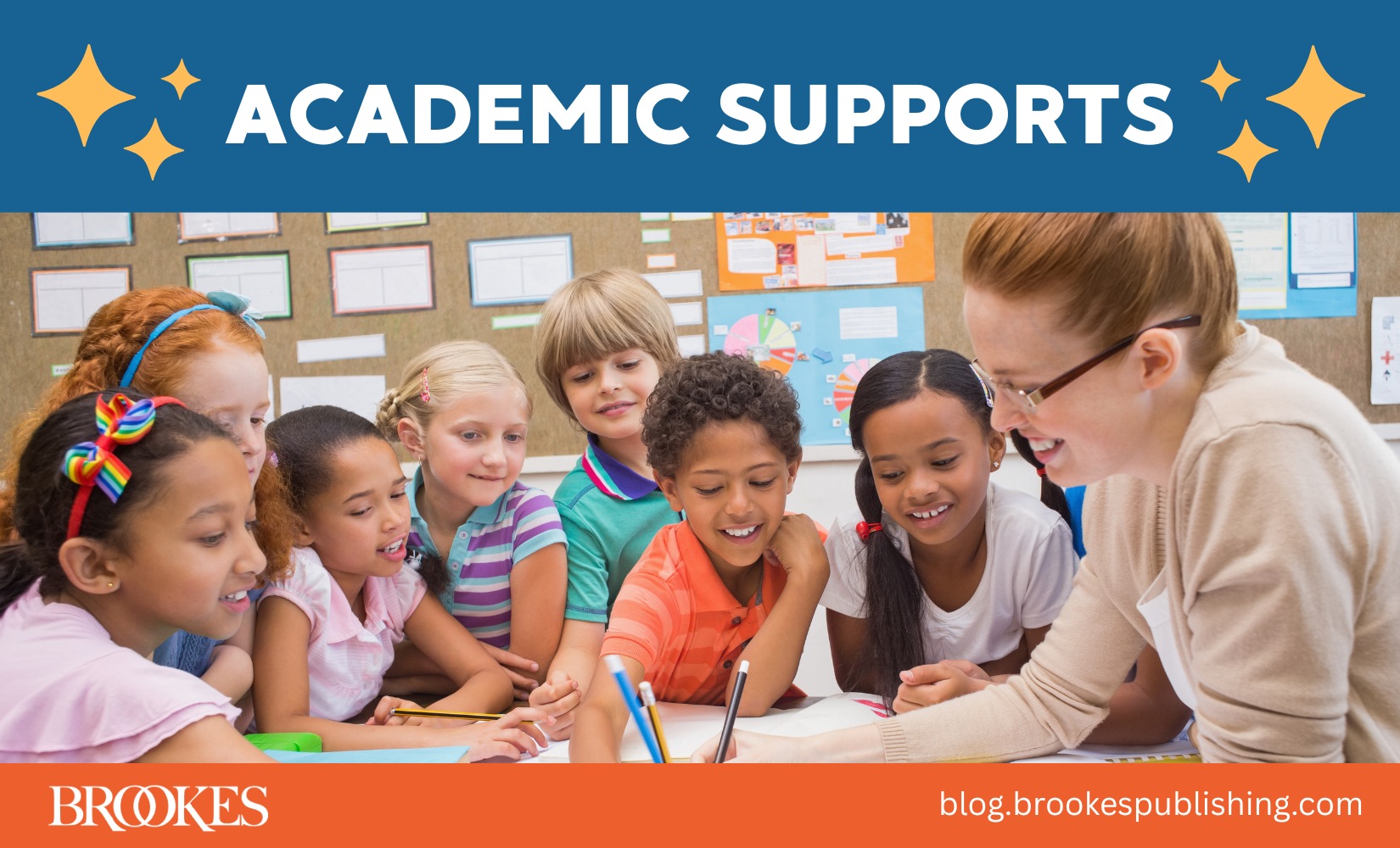5 Essential Elements of an Inclusive Learning Environment
March 12, 2019
Has your school committed to authentic, meaningful inclusion? If yes, do you wonder whether you’re taking the right steps toward success? The Inclusion Lab is here to help you figure out where you are on the road to effective inclusive practices—and share advice on how to move forward.
 In today’s post, you’ll learn about five essential elements of a classroom environment that supports every student and meets their diverse needs. These are excerpted and adapted from Picture Inclusion!, the theory-to-practice guide by Whitney H. Rapp, Katrina L. Arndt, & Susan M. Hildenbrand. How many of these five elements are present in your own classroom? Read on to gauge where you are now and what you can do next to work toward stronger inclusive practices.
In today’s post, you’ll learn about five essential elements of a classroom environment that supports every student and meets their diverse needs. These are excerpted and adapted from Picture Inclusion!, the theory-to-practice guide by Whitney H. Rapp, Katrina L. Arndt, & Susan M. Hildenbrand. How many of these five elements are present in your own classroom? Read on to gauge where you are now and what you can do next to work toward stronger inclusive practices.
Manageable Class Size
In Picture Inclusion!, Rapp, Arndt, & Hildenbrand created three model inclusive classrooms. These classrooms had 20 students each, with a full-time teacher and a full-time paraprofessional in the classroom, for a student–adult ratio of 10:1. “We wanted to create classroom sizes that follow research-based recommendations and also represent the reality for many schools,” the authors say. “All of the students’ needs can be met with two teaching professionals in the classroom at all times, plus in-class, co-teaching support from related services professionals.”
To meet student needs most effectively, all classrooms in a school district should be inclusive, with no greater concentration of students with disabilities in any one classroom. In line with that belief, each model classroom in Picture Inclusion! includes two or three students who have IEPs and one or two students with 504 plans (meaning that 15-20% of students in the model classrooms have a documented need for special supports). Rapp, Arndt, & Hildenbrand believe that classrooms with up to 20% of students with IEPs and 504s can be fully supported in an inclusive classroom, and they outline the “how” with concrete examples in their book.
Manageable, Shared Transitions
Students make multiple transitions throughout the day as they arrive in the morning, travel to and from specials and lunch, and leave after dismissal. Many students with disabilities experience more transitions than their peers do, as they leave to go to pull-out services or special education classes. To reduce the disruption of transitions, students in inclusive classrooms should stay together and make the same number of transitions as a group throughout the school day.
That doesn’t mean all students are receiving the same kind of instruction all day. Rapp, Arndt, & Hildenbrand provide an example of how students can make a single transition to a period of flexible instruction time (FIT) and still receive instruction that meets individual needs:
“Every student goes to FIT at the same time each day. Some students receive their related services or accelerated instruction, whereas others receive Tier 2 RTI supports that they may currently need in reading or math. Still others have a choice of academic or behavioral support activities that meet their needs at the time. For example, first-grader Bridget receives her 60 minutes of daily speech-language therapy; third-grader Odette always receives math support twice each week but chooses from several options the other 3 days of the week; and fifth-grader Iris may choose from a few different activities each day. Although students may be located in different parts of the school during this time, no one is missing instruction or social opportunities in the classroom.”
Instruction from Highly/Specially Trained Professionals
Rapp, Arndt, & Hildenbrand call for a change in the way teachers are prepared for the modern inclusive classroom. Rather than separating general from special education, they believe “there should be a shift in the field of teacher education toward preparing all teacher candidates with an inclusive education focus, one that is fundamentally different than dual- or double-major preparation of general education plus special education, which risks portraying two separate populations of students who are essentially different.” Until this fundamental shift happens, they stress that:
- All educators in the classroom should be committed to the full inclusion of all students.
- Daily schedules should be designed to support consistent collaboration and consultation between teachers and other professionals.
- All related services professionals and specials teachers should meet national professional preparation standards in their respective fields.
- The school and district should provide ongoing professional development opportunities for all staff.
Assistance from Paraprofessionals
Ideally, each classroom should have a full-time paraprofessional to support instruction and management. In the sample fifth-grade classroom created by Rapp, Arndt, & Hildenbrand, there are also two one-to-one paraprofessionals who mainly focus on the student with whom they are assigned to work but are also able to support other students who work in the same small group. In this way, the one-to-one paraprofessionals can benefit many other learners in the classroom and facilitate peer relationships for the students they are assigned to support.
Family Collaboration
Families know their children best, and their input, support, and teamwork is invaluable. Rapp, Arndt, & Hildenbrand provide these guidelines for welcoming families of students as full members of the education team and school community:
- Family members should be an integral part of every case management meeting and attend grade-level planning meetings.
- Ongoing, open communication should be established at the beginning of the year.
- Preferred communication methods and manageable communication times and schedules should be planned with the input of family members.
- Families should help complete the student profiles in the beginning of the year—and help update them as needed when they are revisited during quarterly conferences.
- The goals, hopes, and concerns that families have for their children should be respected and considered in all planning and goal setting efforts.
These five elements aren’t the only essentials for an effective inclusive classroom, but they’ll provide a strong foundation for any teacher who wants to meet the individual needs of every student. For much more practical, real-world advice on the nuts and bolts of inclusion…
GET THE BOOK
Snapshots of Successful Diverse Classrooms
By Whitney H. Rapp, Ph.D., Katrina L. Arndt, Ph.D., & Susan M. Hildenbrand, Ed.D.
This theory-to-practice guidebook gives you a reader-friendly introduction to the why and how of inclusion in Grades K–5, plus an inside look at how three model classrooms—Grades 1, 3, and 5—support students with a wide range of learning needs. Get snapshots of 20 diverse students and their teacher, eight sample lesson plans for teaching core academic areas and specials, and dozens of specific inclusive practices, adaptable for any classroom.




Write a Comment
Your email address will not be published. Required fields are marked *
Post a Comment